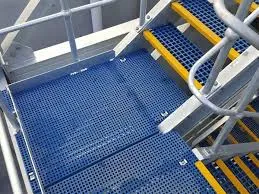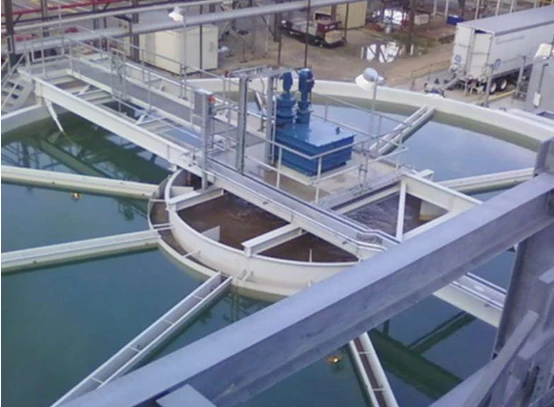
-
 Afrikaans
Afrikaans -
 Albanian
Albanian -
 Amharic
Amharic -
 Arabic
Arabic -
 Armenian
Armenian -
 Azerbaijani
Azerbaijani -
 Basque
Basque -
 Belarusian
Belarusian -
 Bengali
Bengali -
 Bosnian
Bosnian -
 Bulgarian
Bulgarian -
 Catalan
Catalan -
 Cebuano
Cebuano -
 China
China -
 China (Taiwan)
China (Taiwan) -
 Corsican
Corsican -
 Croatian
Croatian -
 Czech
Czech -
 Danish
Danish -
 Dutch
Dutch -
 English
English -
 Esperanto
Esperanto -
 Estonian
Estonian -
 Finnish
Finnish -
 French
French -
 Frisian
Frisian -
 Galician
Galician -
 Georgian
Georgian -
 German
German -
 Greek
Greek -
 Gujarati
Gujarati -
 Haitian Creole
Haitian Creole -
 hausa
hausa -
 hawaiian
hawaiian -
 Hebrew
Hebrew -
 Hindi
Hindi -
 Miao
Miao -
 Hungarian
Hungarian -
 Icelandic
Icelandic -
 igbo
igbo -
 Indonesian
Indonesian -
 irish
irish -
 Italian
Italian -
 Japanese
Japanese -
 Javanese
Javanese -
 Kannada
Kannada -
 kazakh
kazakh -
 Khmer
Khmer -
 Rwandese
Rwandese -
 Korean
Korean -
 Kurdish
Kurdish -
 Kyrgyz
Kyrgyz -
 Lao
Lao -
 Latin
Latin -
 Latvian
Latvian -
 Lithuanian
Lithuanian -
 Luxembourgish
Luxembourgish -
 Macedonian
Macedonian -
 Malgashi
Malgashi -
 Malay
Malay -
 Malayalam
Malayalam -
 Maltese
Maltese -
 Maori
Maori -
 Marathi
Marathi -
 Mongolian
Mongolian -
 Myanmar
Myanmar -
 Nepali
Nepali -
 Norwegian
Norwegian -
 Norwegian
Norwegian -
 Occitan
Occitan -
 Pashto
Pashto -
 Persian
Persian -
 Polish
Polish -
 Portuguese
Portuguese -
 Punjabi
Punjabi -
 Romanian
Romanian -
 Russian
Russian -
 Samoan
Samoan -
 Scottish Gaelic
Scottish Gaelic -
 Serbian
Serbian -
 Sesotho
Sesotho -
 Shona
Shona -
 Sindhi
Sindhi -
 Sinhala
Sinhala -
 Slovak
Slovak -
 Slovenian
Slovenian -
 Somali
Somali -
 Spanish
Spanish -
 Sundanese
Sundanese -
 Swahili
Swahili -
 Swedish
Swedish -
 Tagalog
Tagalog -
 Tajik
Tajik -
 Tamil
Tamil -
 Tatar
Tatar -
 Telugu
Telugu -
 Thai
Thai -
 Turkish
Turkish -
 Turkmen
Turkmen -
 Ukrainian
Ukrainian -
 Urdu
Urdu -
 Uighur
Uighur -
 Uzbek
Uzbek -
 Vietnamese
Vietnamese -
 Welsh
Welsh -
 Bantu
Bantu -
 Yiddish
Yiddish -
 Yoruba
Yoruba -
 Zulu
Zulu
Premium Fiberglass Storage Tanks Durable & Corrosion-Resistant
- Introducing Superior Industrial Storage Solutions
- Technical Advantages Over Traditional Materials
- Performance Metrics and Durability Data
- Leading Manufacturer Comparison
- Custom Engineering Capabilities
- Industry-Specific Implementation Cases
- Future-Proofing with Advanced Storage Systems

(fiberglass storage tanks)
The Evolving Landscape of Industrial Storage Solutions
Modern industries require increasingly sophisticated containment systems, making fiberglass storage tanks
a cornerstone of contemporary infrastructure. As operational demands intensify across water treatment, chemical processing, and energy sectors, these corrosion-resistant vessels deliver critical performance advantages. Unlike traditional alternatives, composite materials withstand aggressive media while maintaining structural integrity through decades of continuous service.
Engineers increasingly specify FRP tanks for applications where stainless steel falters – particularly when handling chlorides, acids, or saline solutions. Municipalities and manufacturers now recognize that investing in advanced fibreglass units reduces lifecycle costs despite higher initial expenditure. Case studies reveal maintenance expense reductions of 40–60% compared to metal alternatives over typical 30-year operational spans.
Technical Superiority Over Traditional Materials
Fiberglass-reinforced polymer composites offer material science breakthroughs impossible with conventional steel or concrete vessels. The anisotropic properties of layered glass fibers embedded in resin matrices create:
- Unmatched corrosion resistance – Impervious to rust, electrolysis, and chemical degradation
- Zero permeability – Monolithic construction prevents seepage and vapor transmission
- Structural resilience – Maintains strength at temperatures from -60°F to 180°F
- Weight efficiency – Installation weights 70% less than comparable steel units
Manufacturers apply vacuum infusion molding and filament winding techniques to engineer wall thicknesses precisely calibrated to contents and pressure requirements. This allows optimizing material usage while ensuring burst pressures exceeding 300% of operating specifications. Industry certifications typically guarantee 20-year structural warranties against manufacturing defects.
Performance Metrics and Durability Data
Accelerated aging simulations confirm exceptional longevity, with fiberglass water storage tanks consistently surpassing projected service lives. Third-party testing verifies material degradation rates below 0.5% per decade in standard chemical exposure scenarios. Performance benchmarks include:
| Property | Fiberglass Tanks | Carbon Steel | Concrete |
|---|---|---|---|
| Life expectancy (years) | 30–50+ | 10–20 | 15–25 |
| Maintenance cost/yr ($/ft³) | $1.2–$2.4 | $8.7–$15.3 | $6.5–$10.2 |
| Thermal conductivity (BTU/hr•ft•°F) | 0.18 | 26 | 0.8 |
Data aggregates from over 7,300 installations show total failure rates below 0.12% annually – primarily resulting from improper installation rather than material deficiencies. Ongoing NSF/ANSI 61 certification ensures safe potable water containment throughout service duration.
Leading Manufacturer Comparison
The industrial storage market features prominent competitors with distinct engineering philosophies and specializations:
| Manufacturer | Core Technologies | Capacity Range (gallons) | Chemical Resistance Certifications |
|---|---|---|---|
| Containment Solutions Inc | Multi-axis filament winding | 500–500,000 | Full FM Approved |
| Poly Processing Co | Cross-linked polyethylene | 1,200–30,000 | NACE MR0175 |
| Lancaster Tank | Vinylester resin systems | 1,500–250,000 | API 650 Appendix S |
Each producer maintains proprietary resin formulations to address specific chemical resistance requirements. Third-party validation confirms leakage rates below 0.001% annually for properly installed units meeting AWWA D120 standards.
Custom Engineering Capabilities
Modern fibreglass storage tanks transition from standardized products toward application-engineered solutions reflecting these parameters:
- Material optimization – Liner formulations precisely matched to contents (e.g., bisphenol epoxy for solvent storage)
- Configuration flexibility – Horizontal/vertical orientation with custom nozzle placements and support designs
- Integration features – Embedded sensors, heating systems, and agitation mechanisms
Design engineers employ finite element analysis to simulate stresses under operational and seismic loading conditions. Projects exceeding 100,000 gallon capacities typically feature double-wall construction with interstitial monitoring – increasingly mandated for hazardous material containment under EPA regulations. Fabrication timelines range from standard 8-week deliveries to complex custom installations requiring 20–26 weeks.
Industry-Specific Implementation Cases
Water treatment plants represent 42% of fiberglass water storage installations globally, where corrosion resistance significantly extends infrastructure lifespan. Notable installations include:
- Desalination project – 48×250,000-gallon tanks resisting saltwater corrosion for 18+ years in Middle Eastern facility
- Chemical manufacturing – Ethylene dichloride storage achieving zero maintenance costs since 2007 installation
- Food processing
Semiconductor manufacturing facilities increasingly adopt ultra-pure water systems using fiberglass tanks exclusively. Recent innovations include conductive liners preventing electrostatic discharge and non-outgassing resins maintaining parts-per-trillion purity levels. Installation analyses consistently reveal ROI periods under 5 years across these heavy industrial applications.
Future-Proofing Industrial Facilities with Fiberglass Storage Tanks
As operational sustainability becomes paramount, fiberglass storage tanks deliver unmatched longevity with minimized environmental impact. Studies confirm 85% reduction in carbon footprint compared to concrete alternatives when accounting for complete lifecycles. The material innovations occurring within FRP manufacturing – including recycled glass content formulations and bio-resin development – position these containment solutions as permanent fixtures in industrial infrastructure planning.
Forward-looking operations managers recognize that specifying quality fibreglass units constitutes capital preservation rather than mere expenditure. When factoring inevitable replacement costs for inferior materials over multi-decade operational horizons, the technical advantages become financially inescapable. Specifications now increasingly prioritize NSF-61 certified units exceeding OSHA 1910 containment standards for both safety compliance and enterprise resilience.

(fiberglass storage tanks)
FAQS on fiberglass storage tanks
以下是围绕核心关键词[fiberglass storage tanks]及相关术语创建的5组FAQs问答,采用HTML富文本格式:Q: What are the primary applications of fiberglass water storage tanks?
A: Fiberglass water storage tanks are widely used for potable water containment in municipal systems, rainwater harvesting, and agricultural irrigation. Their non-corrosive properties prevent contamination and ensure long-term water quality. They're also ideal for fire suppression storage and industrial process water.
Q: How do fibreglass storage tanks compare to steel tanks in durability?
A: Fibreglass storage tanks outperform steel tanks in corrosion resistance, eliminating rust issues in harsh chemical or marine environments. They require no protective coatings and maintain structural integrity for decades with minimal maintenance. This makes them more cost-effective for corrosive substance containment.
Q: What temperature range can fiberglass storage tanks withstand?
A: Professionally engineered fiberglass storage tanks typically operate efficiently between -40°F to 200°F (-40°C to 93°C). Their thermal stability prevents deformation during temperature fluctuations, and custom formulations can extend this range for specialized industrial applications.
Q: Are fiberglass water storage tanks safe for drinking water?
A: Yes, NSF/ANSI 61-certified fiberglass water storage tanks meet stringent potable water standards. Their non-porous surface inhibits bacterial growth and prevents leaching of contaminants. Proper installation and periodic inspection ensure ongoing compliance with health regulations.
Q: What maintenance do fibreglass storage tanks require?
A: Fibreglass storage tanks need minimal maintenance due to their corrosion-resistant nature. Recommended care includes biannual visual inspections for surface damage, nozzle gasket checks, and sediment removal every 2-5 years. Avoid abrasive cleaners that could compromise the gel coat.
Latest news
-
Premium GRP Playground Equipment Durable & Safe FunNewsJun.06,2025
-
Premium FRP Storage Tanks - Corrosion Proof Acid ContainmentNewsJun.06,2025
-
FRP Absorber Industrial Noise Control SolutionNewsJun.06,2025
-
Efficient FRP Demister Superior Fog Elimination GearNewsJun.05,2025
-
Optimize Data Transfer with RTRP Protocol for Max EfficiencyNewsJun.05,2025
-
Innovative Gold Mining Bits for Enhanced Drilling EfficiencyNewsJun.05,2025









